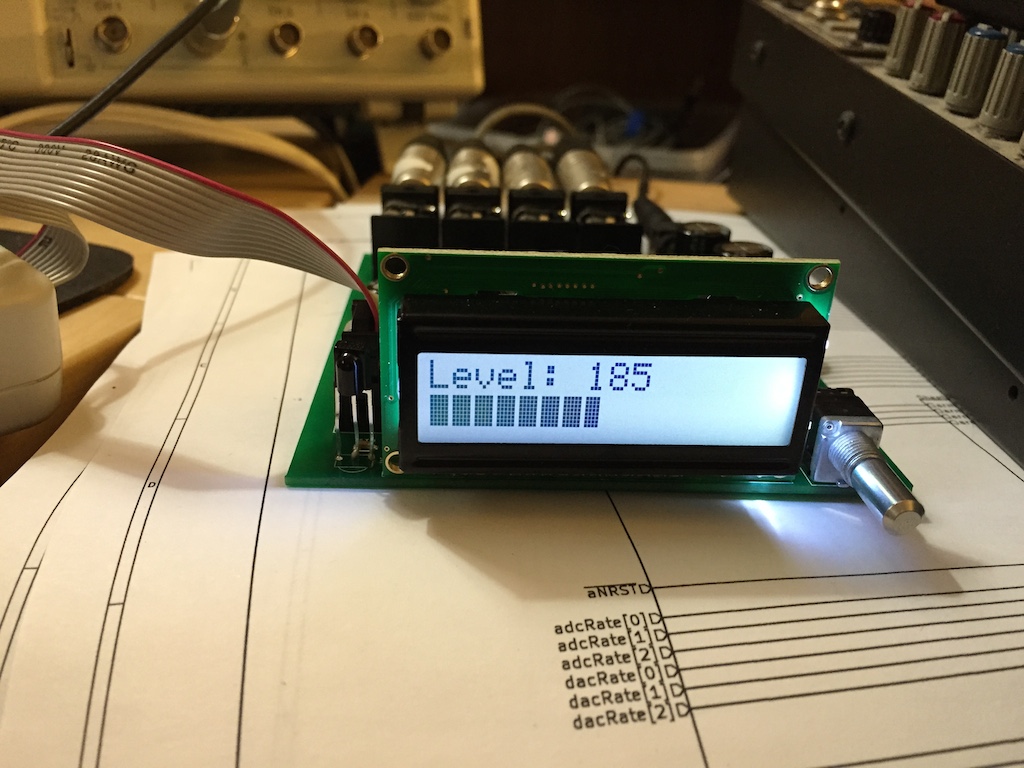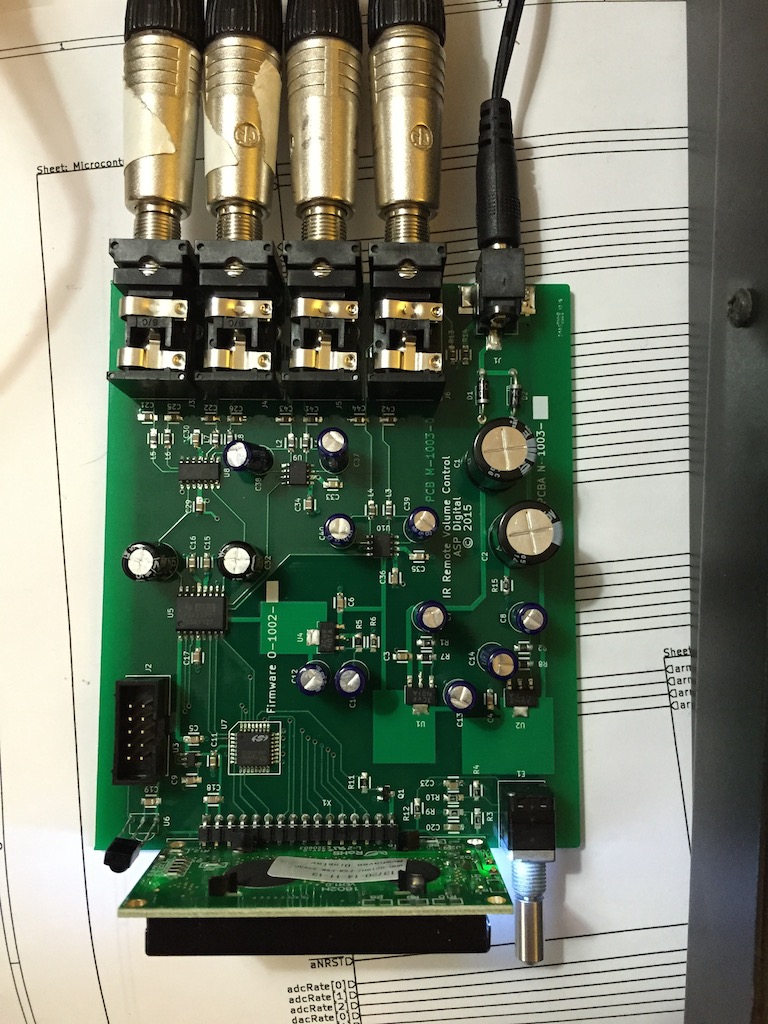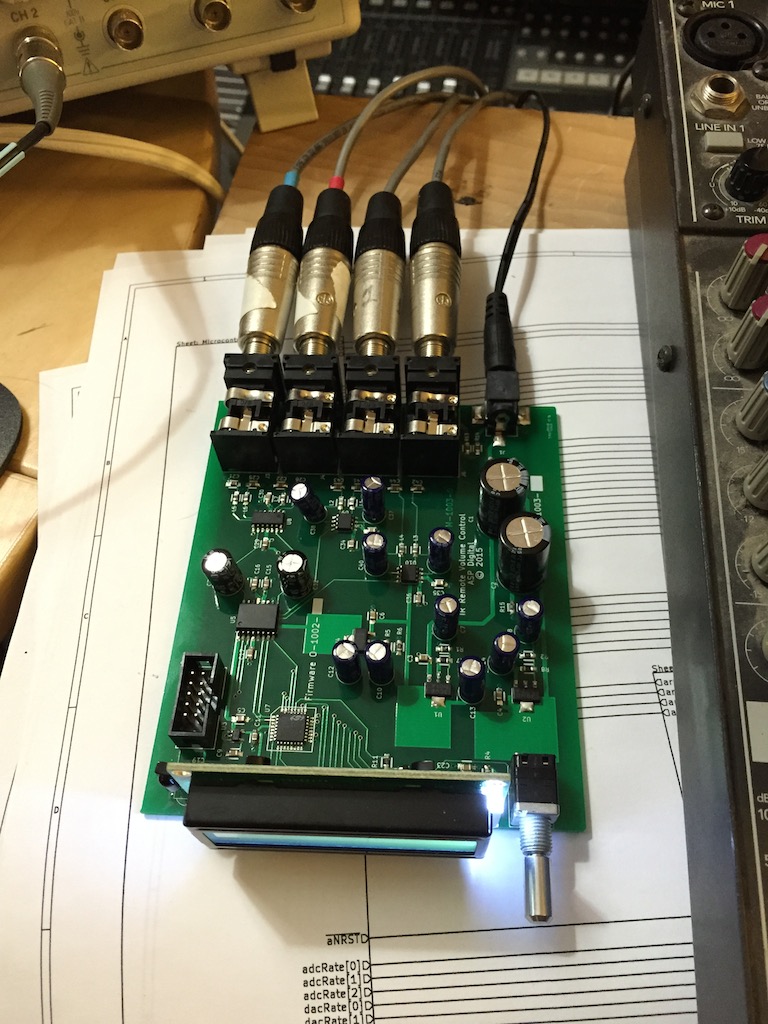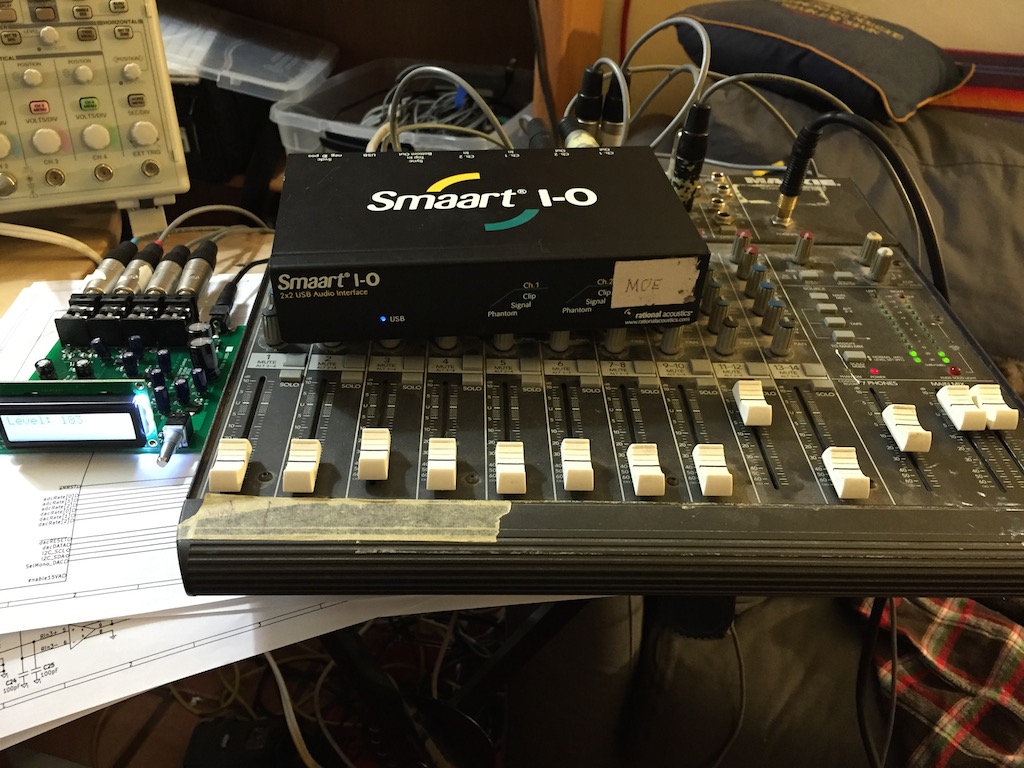Andy Peters
Well-known member
Our "home theatre" consists of a Mac mini, a TV, a DVD player and a game thing. For audio I have a pair of KRK Rokit 5 self-powered studio monitors. (These little things sound pretty great.) When watching streamed or download stuff from the Mac, it works great, with the Mac feeding the monitors. But the other devices can't feed the monitors, so their audio goes through the TV.
That's no fun. I used the TV's digital audio output into a cheap DAC into the monitors, and that works, except: that output doesn't follow the TV volume control. I guess they assume that this digital audio output would go to a stereo receiver which has that control.
So I designed and built a little IR remote volume control that fits into a Hammond extrusion. Balanced in and out with THAT things, a TI PGA2320 which does the volume control, a two-line LCD for display, an SiLabs C8051F314 to read an IR receiver and a rotary encoder and run the whole show. Power is from a 16 VAC wall wart.
It's programmed to know the little Apple gumstick remotes, which speak the NEC code. It can also be switched to use the RC-5 IR code. I need to add a "pair" feature so it will respond to only one particular remote.
It's dead quiet, and does what it's supposed to with no fuss.
Here is what it looks like.




That's no fun. I used the TV's digital audio output into a cheap DAC into the monitors, and that works, except: that output doesn't follow the TV volume control. I guess they assume that this digital audio output would go to a stereo receiver which has that control.
So I designed and built a little IR remote volume control that fits into a Hammond extrusion. Balanced in and out with THAT things, a TI PGA2320 which does the volume control, a two-line LCD for display, an SiLabs C8051F314 to read an IR receiver and a rotary encoder and run the whole show. Power is from a 16 VAC wall wart.
It's programmed to know the little Apple gumstick remotes, which speak the NEC code. It can also be switched to use the RC-5 IR code. I need to add a "pair" feature so it will respond to only one particular remote.
It's dead quiet, and does what it's supposed to with no fuss.
Here is what it looks like.






